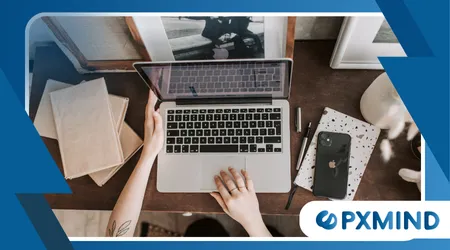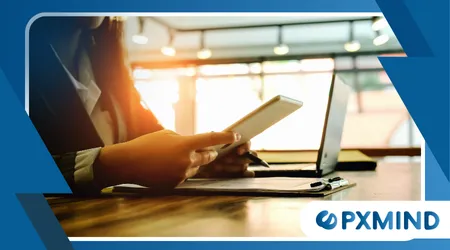How to Build a Distraction-Free Workspace at Home

Creating a Distraction-Free Workspace has become one of the most strategic priorities for modern professionals working remotely.
Anúncios
In this guide, you’ll discover how to eliminate common productivity drains, choose ergonomic design principles, optimize your digital environment, and foster deep focus habits — all grounded in real data, expert perspectives, and lifestyle-conscious decisions.
Summary:
- The hidden cost of distractions and why deep focus is critical
- Designing with intention: your physical environment matters
- The digital side of clutter and how to tame it
- Psychological boundaries and their power in remote work
- Purposeful task structuring for better flow
- Building attention-supportive routines
- Creating sensory consistency without overengineering your space
The Hidden Cost of Distractions: Why Focus Is Your New Superpower
Distractions at home aren’t just about noise. They’re about micro-interruptions that fragment your attention and reduce cognitive resilience.
A Distraction-Free Workspace isn’t about aesthetics alone — it’s a performance system.
According to a study by the University of California, Irvine, it takes around 23 minutes and 15 seconds to return to a task after an interruption.
This means just five interruptions a day can result in nearly two hours of lost deep work.
That data hits harder when you’re in a role where creativity, analysis, or writing is your core deliverable. You’re not just losing time; you’re draining your cognitive battery.
In an economy where output is measured by results, attention is your most valuable currency.
Rather than trying to work harder, the smarter path is to optimize your environment so that it works with you, not against you.
The good news? Most of the solutions are low-cost or completely free, but highly effective.
+ How Nature Walks Improve Your Mental
Designing with Intention: Turn Passive Space into Active Support
Your environment sends subconscious signals to your brain all day. A cluttered table, harsh lighting, or misplaced chair isn’t just inconvenient — it’s mentally exhausting.
Natural light remains one of the most impactful upgrades you can make.
According to Work Design Magazine (2023), workers exposed to sunlight reported improved sleep quality, leading to more alert mornings and higher productivity.
When natural light isn’t an option, full-spectrum LED lighting can serve as an effective alternative.
In parallel, ergonomics matters more than ever. Remote work has led to a rise in musculoskeletal complaints, especially among those using kitchen chairs or coffee tables as workstations.
The key is adjustability and support. Your screen should be at eye level, wrists neutral, and feet flat on the floor or a footrest.
Break your space into functional zones, even if it’s one small corner. One for focus work, another for video calls if possible.
The separation creates intentionality. And no, you don’t need a full remodel — a folding screen, rug, or even a bookshelf can create boundaries.
+ Why Multitasking Kills Focus (And What to Do Instead)
Taming Digital Clutter: Out of Sight, Out of Mind

Even with a pristine physical setup, digital distractions can sabotage your progress. Notifications, open tabs, and cluttered desktops overload the mind.
Use browser extensions like Freedom or LeechBlock to disable social media or news sites during work blocks.
Organize your files weekly. A folder labeled “Later” becomes a black hole for procrastination, so be ruthless.
Email deserves its own discipline. Don’t start your day in your inbox. Instead, allocate two blocks — mid-morning and late afternoon — to process emails.
This keeps you from being in constant response mode and gives you space to lead your day.
According to a 2024 McKinsey report, knowledge workers spend an average of 28% of their week managing emails. Just reducing that by 30% can give you an extra full day of strategic work per month.
+ Brain Fog: Causes, Symptoms, and How to Clear It
Psychological Boundaries: Working Without Physical Walls
One of the most silent killers of productivity in remote work is the blending of home and professional life. It starts small — checking Slack in bed, replying to emails during dinner. Over time, it erodes mental clarity.
Establishing rituals can signal your brain to shift gears. Morning coffee in a dedicated cup, starting work with a specific playlist, or even changing clothes can all become cognitive cues.
A journalist working from a studio apartment began lighting a sandalwood candle at the start of each workday.
Within weeks, the scent created a deep association with concentration, acting like a mental doorway into her work mode.
Build Rhythm, Not Rigid Schedules: Structure for Flow
Rigid time-blocking can backfire when it doesn’t reflect how your energy works. Instead, stack tasks that require similar brain modes.
Grouping emails, planning, and admin into a single “low-cognitive” period lets you conserve peak hours for creative or analytical work.
Use the Ultradian Rhythm principle: our brain operates in cycles of peak performance every 90-120 minutes.
Respect those windows. After 90 minutes of deep work, a 10-minute break can prevent decision fatigue.
Consider this sample structure:
| Time Block | Activity Type | Goal |
|---|---|---|
| 8:30 – 10:00 AM | Deep Work (creative, strategy) | Maximize brain freshness |
| 10:15 – 11:30 AM | Collaboration (calls/emails) | External touchpoints |
| 11:45 – 1:00 PM | Execution/Admin | Processing, documentation |
| 2:00 – 3:30 PM | Deep Work | Second wave of focus |
| 3:45 – 5:00 PM | Light Tasks or Learning | Recovery with purpose |
You don’t have to follow this exactly. Adjust it based on your role and peak hours. The goal is to cycle between exertion and renewal intelligently.
The Power of Sensory Anchors in Focus Retention
We often overlook how sensory cues shape our environment. Scent, color, and even background sounds can act as powerful anchors for attention.
Apps like Endel or Noisli provide science-backed soundscapes that help induce flow. Lavender or citrus essential oils can boost clarity and calm.
Even desk plants contribute: NASA’s Clean Air Study confirmed that plants like peace lilies and snake plants improve air quality and reduce mental fatigue.
Colors matter too. Blues and greens are known for their calming effect. Avoid overly saturated reds or oranges in your workspace, as they can increase tension over time.
Technology Should Serve, Not Distract
Having the right tools is essential, but more tools don’t equal more productivity. Limit your stack to what truly complements your workflow.
| Tool | Function | Distraction Risk | Recommendation |
|---|---|---|---|
| Notion | Organization/Notes | Low | Highly recommended |
| Slack | Team Communication | High | Mute outside blocks |
| Google Calendar | Time-blocking & Planning | Low | Use with reminders |
| Trello | Visual Task Management | Medium | Use in moderation |
| Pomofocus | Time Tracking (Pomodoro) | Low | Great for rhythm |
Only add a tool if it reduces friction, not if it creates another inbox to check. A minimalist digital ecosystem is essential for a truly Distraction-Free Workspace.
For further insight on tool discipline and tech minimalism, the team at Zapier provides an excellent resource.
Make Room for Movement and Restoration
Stillness isn’t always productive. Long hours in a fixed position can lead to sluggishness, both mentally and physically.
Micro-movements, stretch breaks, or switching between sitting and standing desks can re-energize your focus.
Even stepping away for five minutes every 90 minutes increases circulation and oxygen flow to the brain.
As Stanford neuroscientist Dr. Andrew Huberman notes, brief outdoor walks stimulate dopamine release, which enhances motivation.
Create a “recovery corner” near your workspace with a floor cushion, yoga mat, or even a simple reading nook. Having a space to reset between tasks gives your brain permission to pause without guilt.
Focus Is Like a Clear Lens: An Analogy That Matters
Imagine trying to take a photograph through a fogged-up camera lens. No matter how expensive the gear, the outcome is blurry.
That’s what working through constant distractions feels like. A Distraction-Free Workspace removes the fog, allowing your brain to operate at full clarity.
It’s not about perfection. It’s about intentional choices that support your cognitive health, motivation, and confidence.
Each small change builds on the next, creating an environment that doesn’t just help you work — it helps you thrive.
Final Thoughts: A Modern Approach to Attention
You don’t need to work longer hours to be more productive. You need to reduce the friction between intention and execution. That’s what a Distraction-Free Workspace delivers: clarity, autonomy, and flow.
In an era where attention is monetized, protecting yours is revolutionary. Don’t wait for burnout to force a change.
Start with one decision today — maybe it’s moving your desk, deleting a distracting app, or setting your first ritual.
FAQs
1. Do I need a separate room to create a distraction-free space?
No. A well-defined corner with visual or sensory boundaries is enough. It’s about consistency and cues, not square footage.
2. What’s the best lighting for productivity?
Natural daylight is ideal. If not available, use adjustable LED lamps with color temperatures between 4000K and 5000K to mimic daylight.
3. How can I stay focused during video calls?
Use “Do Not Disturb” settings, close unrelated tabs, and take notes by hand to avoid digital distractions during the call.
4. How often should I reorganize my digital files?
At least once a week. Set a recurring calendar reminder to review and declutter your desktop and download folders.
5. Can background music help with focus?
Yes, particularly instrumental or ambient tracks. Avoid songs with lyrics during tasks that require verbal processing, like writing or reading.
